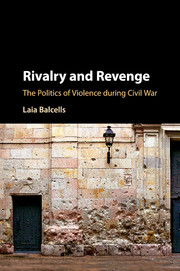8 - Conclusions
from PART III
Published online by Cambridge University Press: 18 May 2017
Summary
“Tristes guerras,
si no es amor la empresa.
Tristes, tristes.”
Miguel Hernández, Cancionero y Romancero de Ausencias“The world is so lovely, yet we turn our backs on it to manufacture private sordid little hells.”
Joan Sales, Incerta GlòriaMAIN LESSONS
This book makes several theoretical and empirical contributions. Firstly, it shows that theories of victimization in civil war should take into consideration differences between types of civil wars, and that we should be careful when applying theories that are largely inspired by one particular context to other civil war settings. Civil war should not be confounded with irregular warfare, and this holds true especially in the post-Cold War period. Yet, most research on civilian victimization still focuses on irregular warfare, both theoretically and empirically. In this book, I have extended the analytical focus to conventional warfare, which is a quite overlooked type of war that poses relevant theoretical puzzles. However, the theory extends beyond conventional conflicts and explains violence wherever the structure of incentives characterizing conventional civil wars exists, or whenever this structure of incentives is sharpened by specific warfare conditions. That is the case, for example, in areas of irregular civil wars that are fully controlled by one armed group – where there is no military contestation – or of international civil wars where armed groups have military control of areas inhabited by people loyal to a rival nation (i.e., in wars of annexation, Downes 2008), including non-core national groups linked to external actors (Mylonas 2012).
Secondly, this book has brought together types of violence that are often studied separately, namely executions/massacres and bombings, which I have called direct and indirect violence, respectively. While most studies focus exclusively on one type or the other, I posit that these two different forms of lethal violence can be explained within a common “rivalry and revenge” framework. Armed groups use direct and indirect violence to target political enemies as well as to satisfy vengeful desires, once wartime violence has taken place.
- Type
- Chapter
- Information
- Rivalry and RevengeThe Politics of Violence during Civil War, pp. 181 - 193Publisher: Cambridge University PressPrint publication year: 2017

